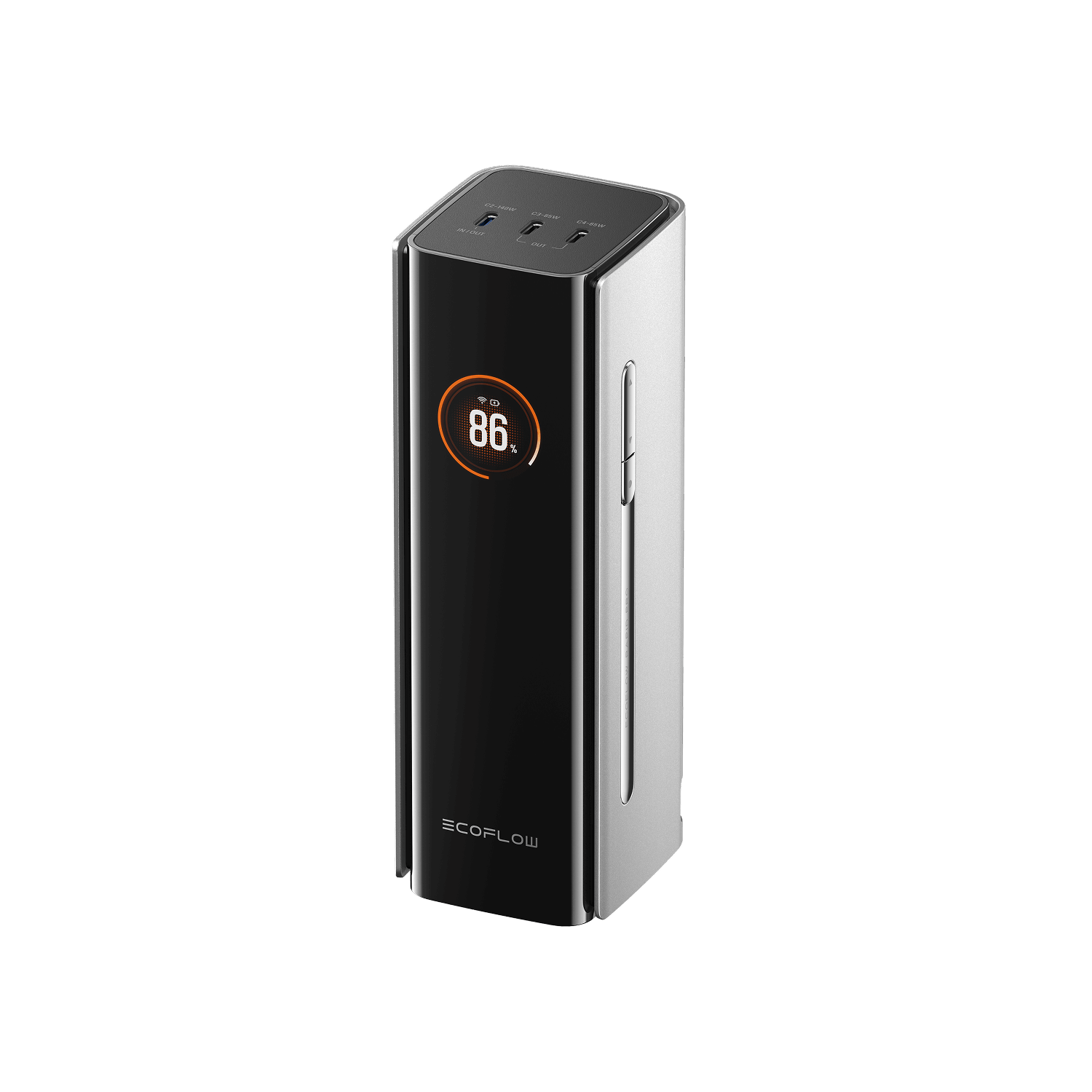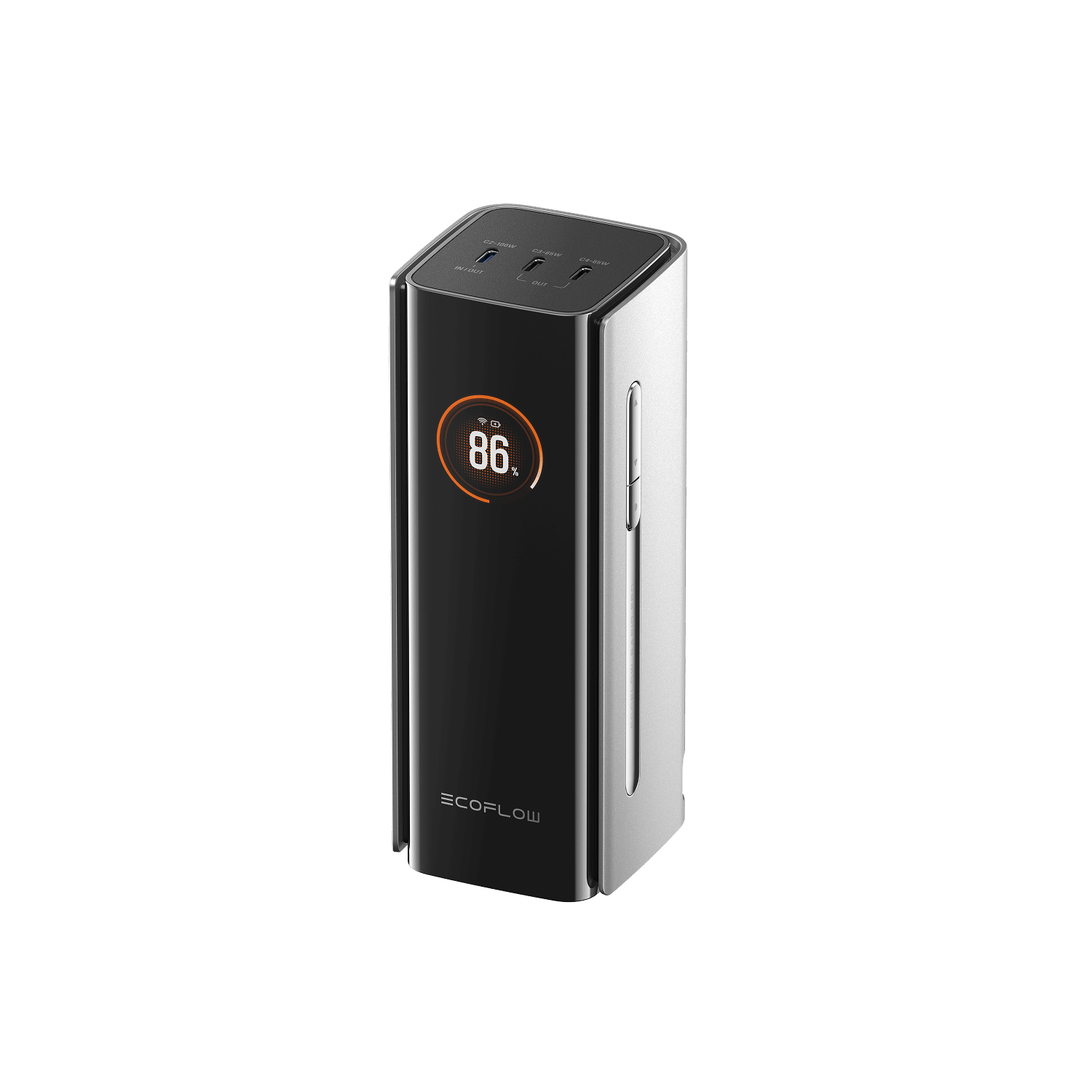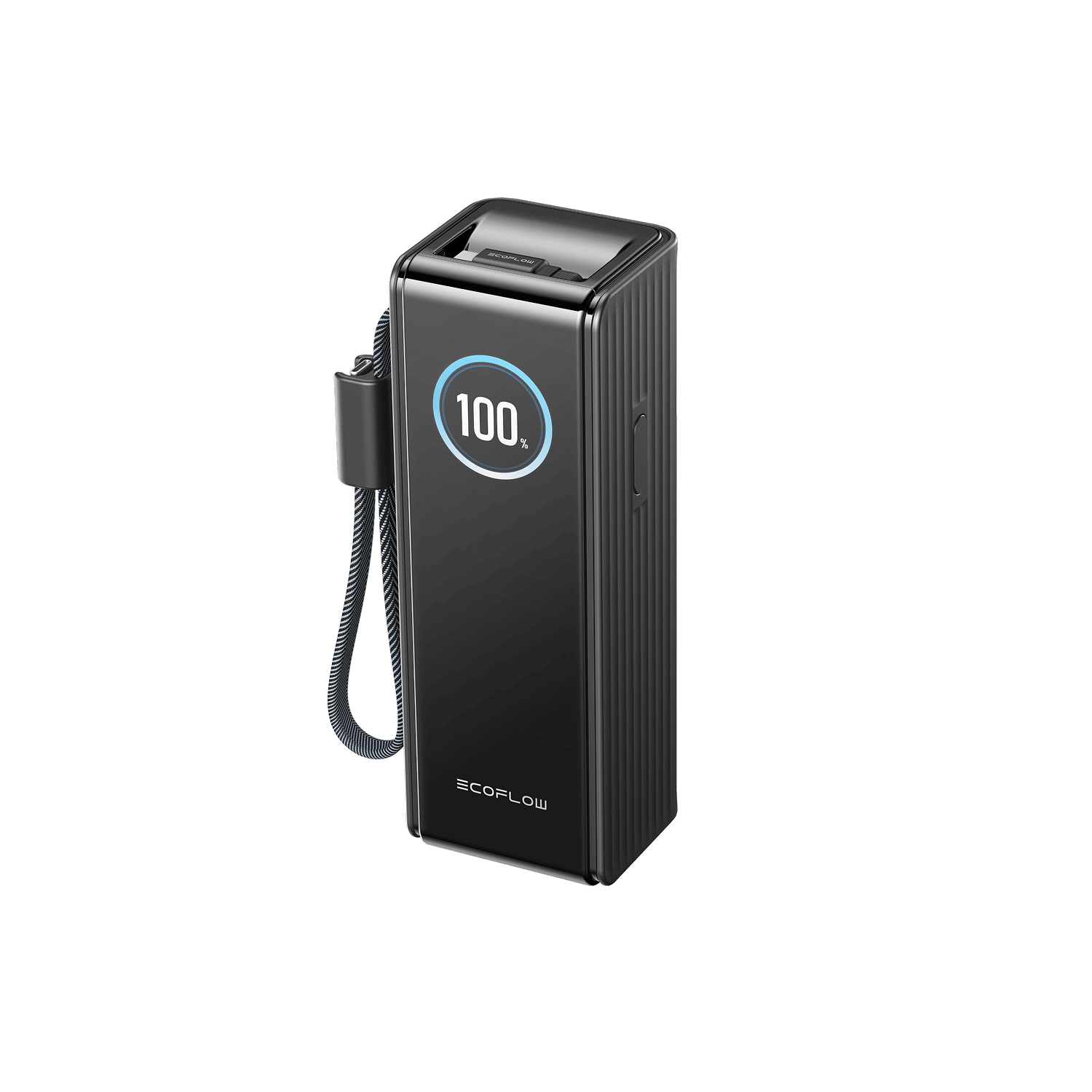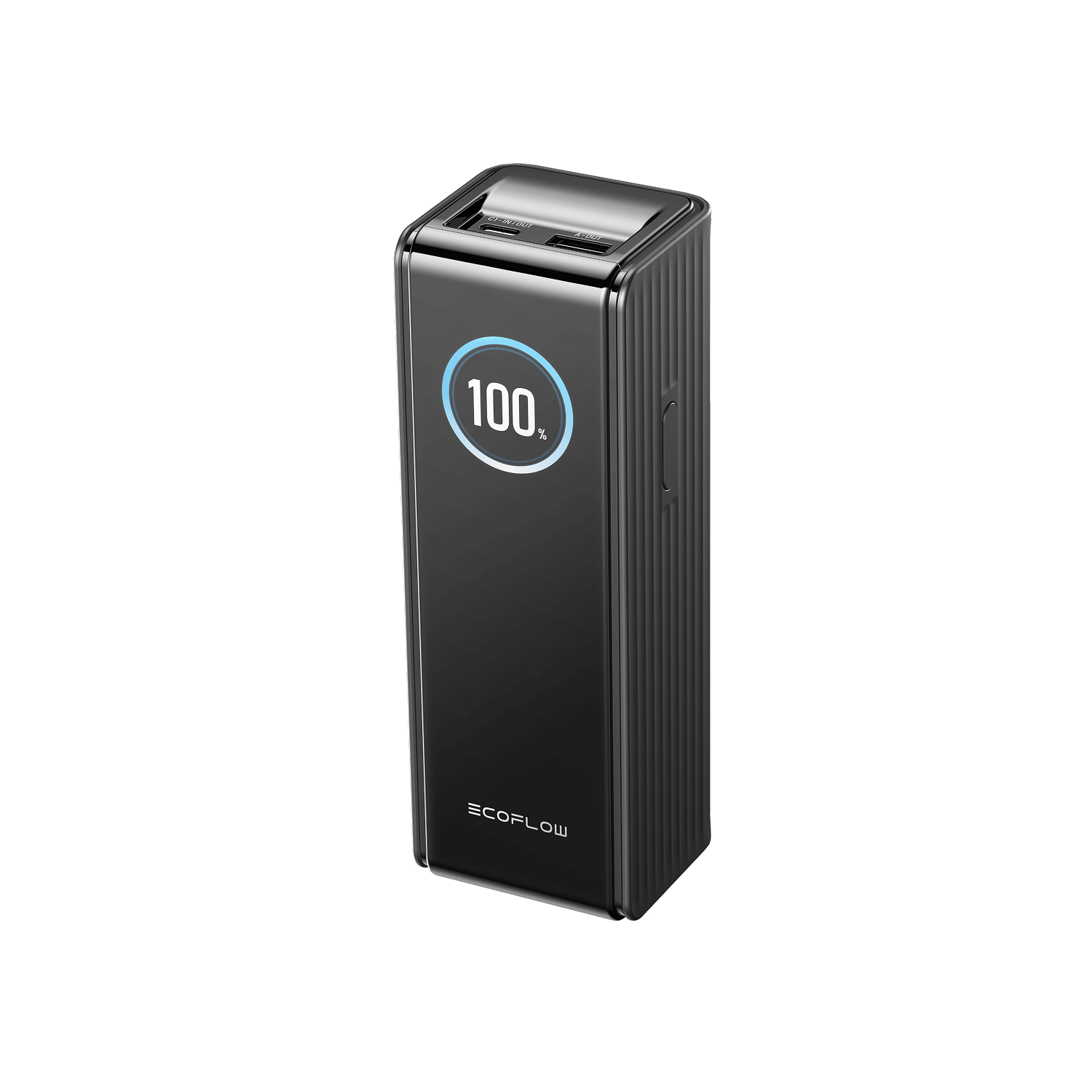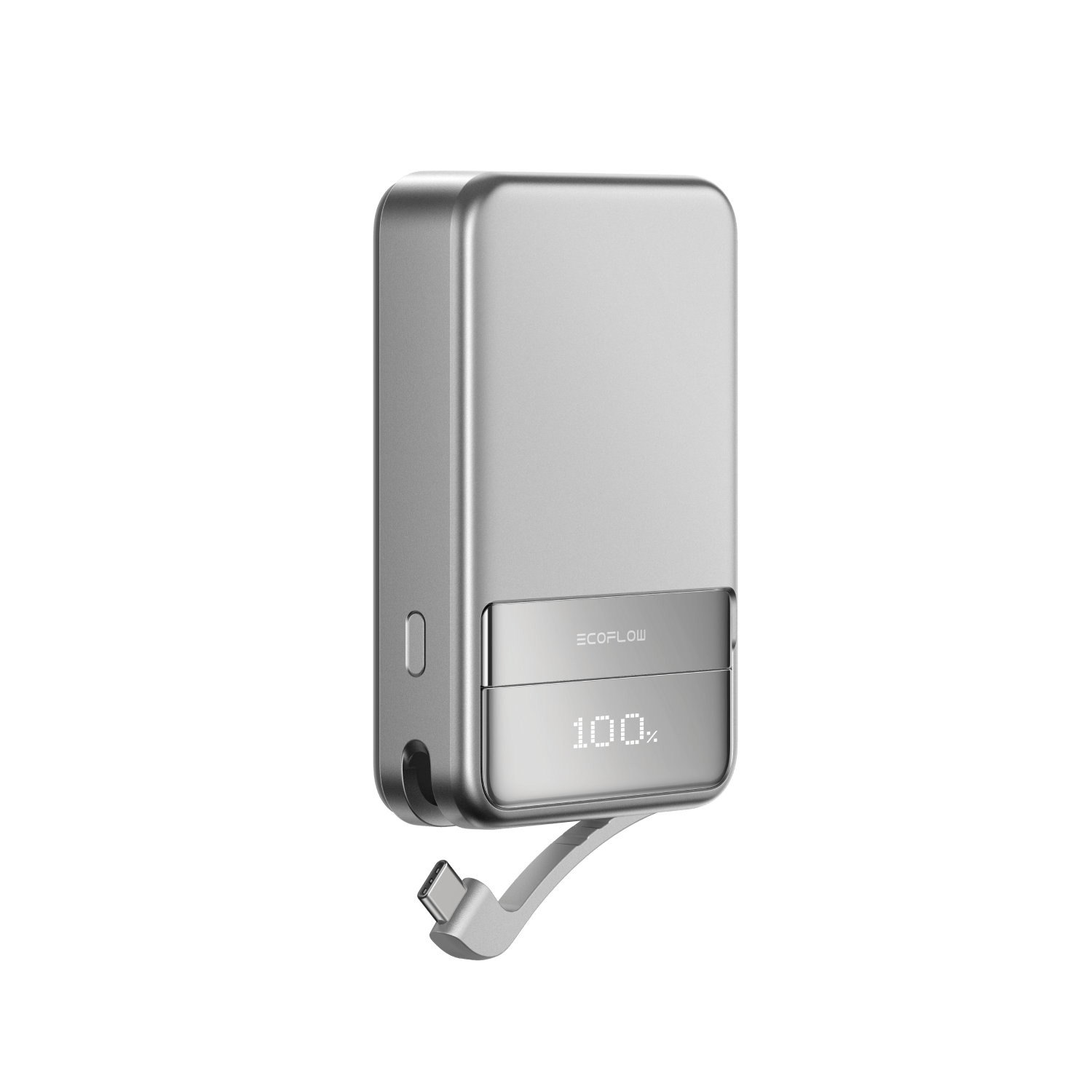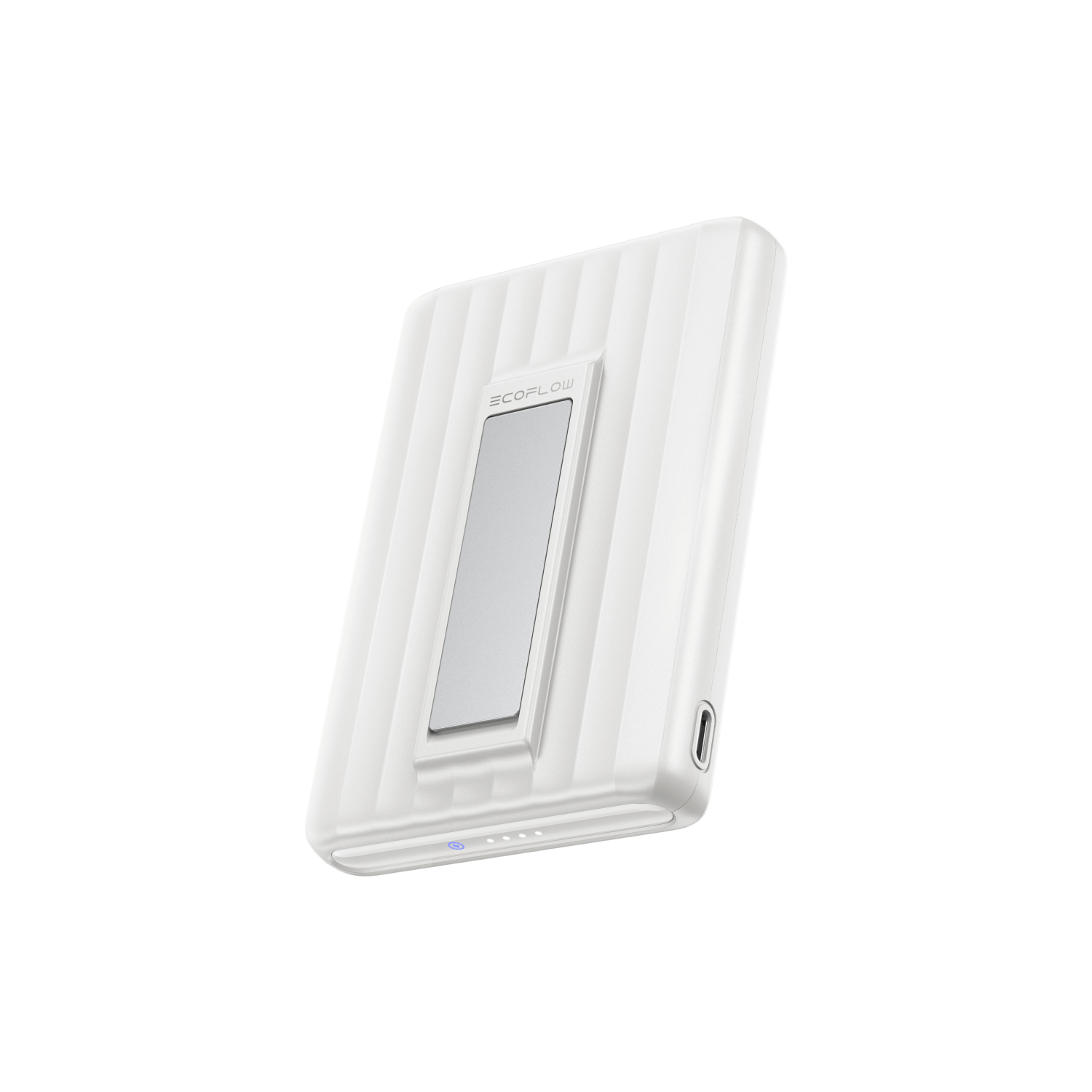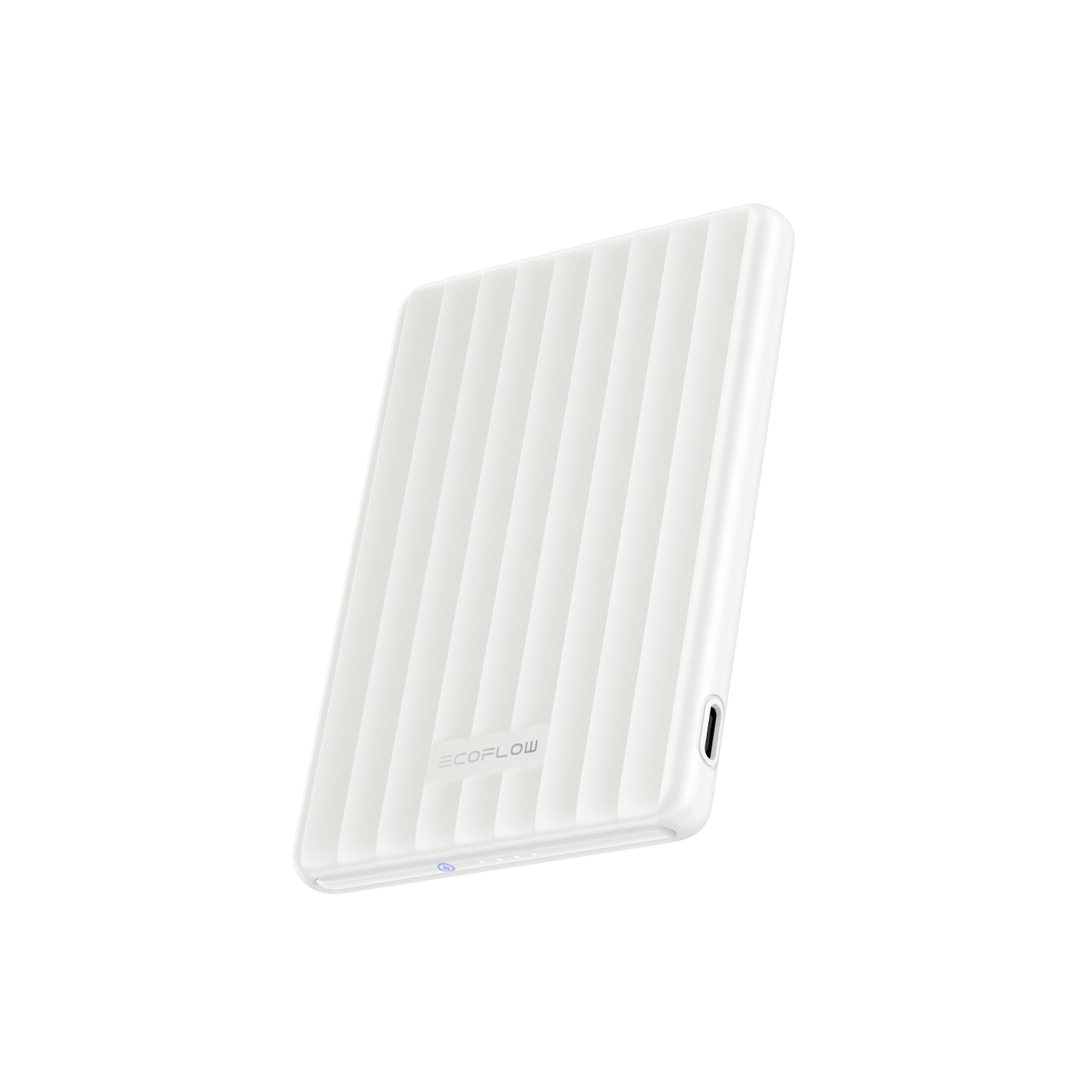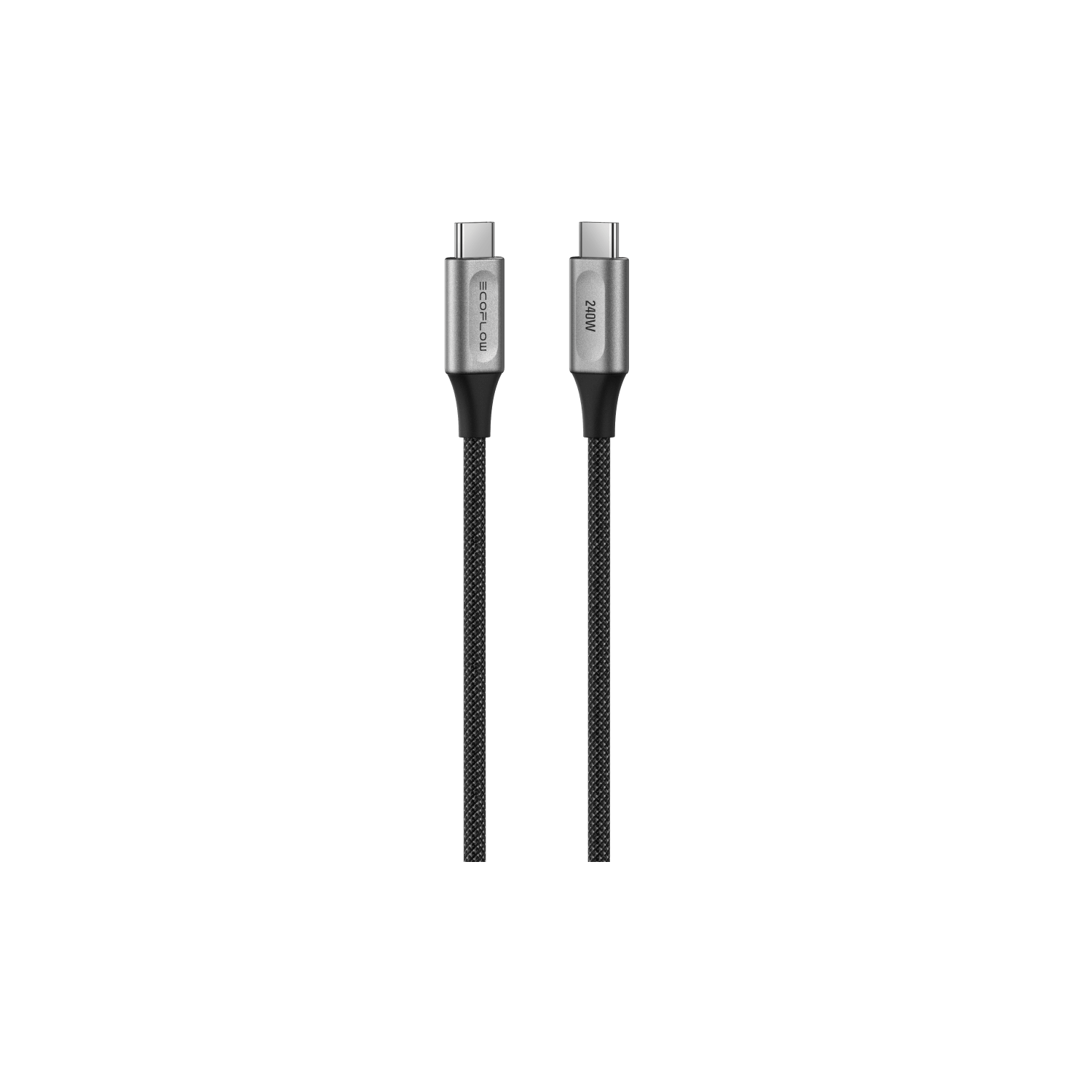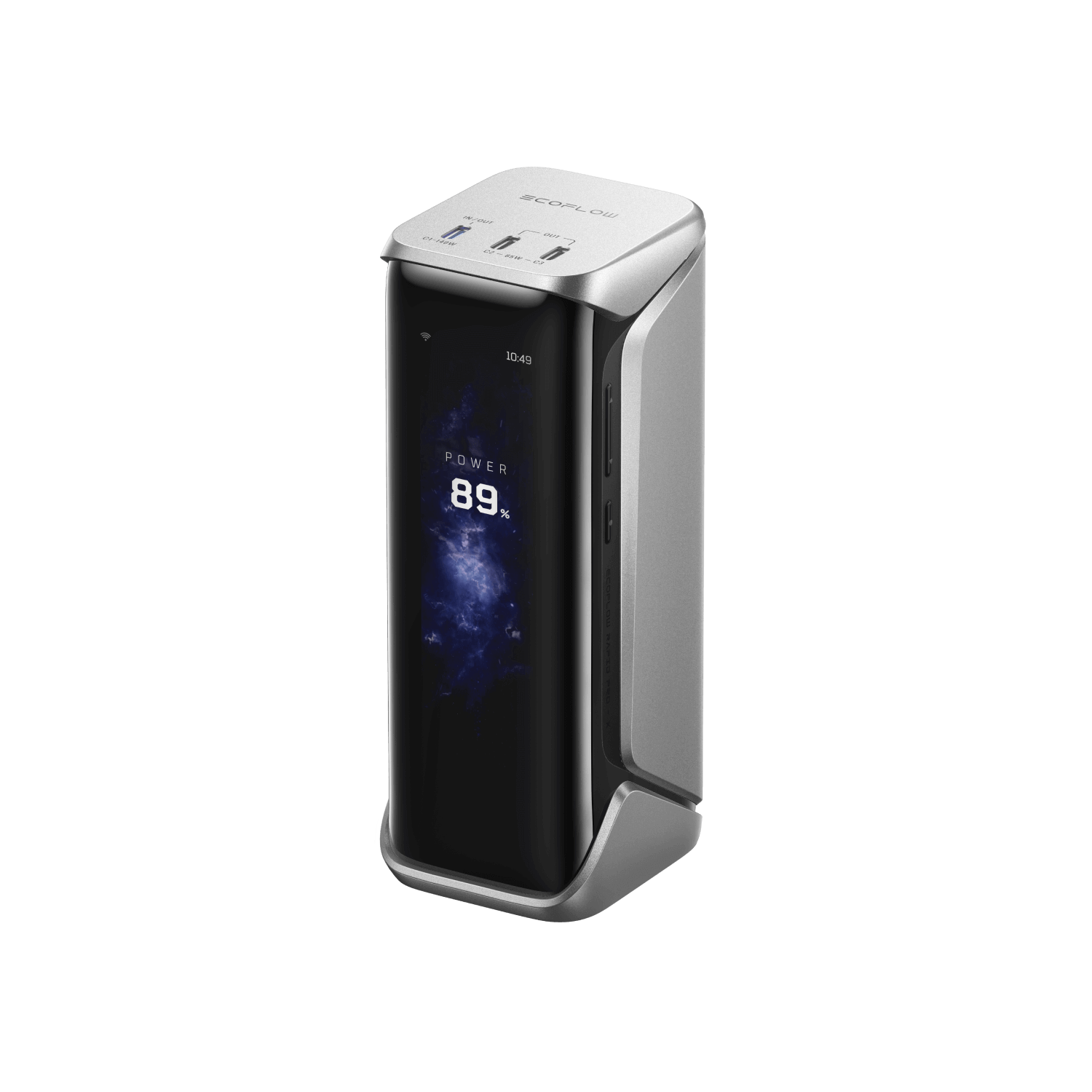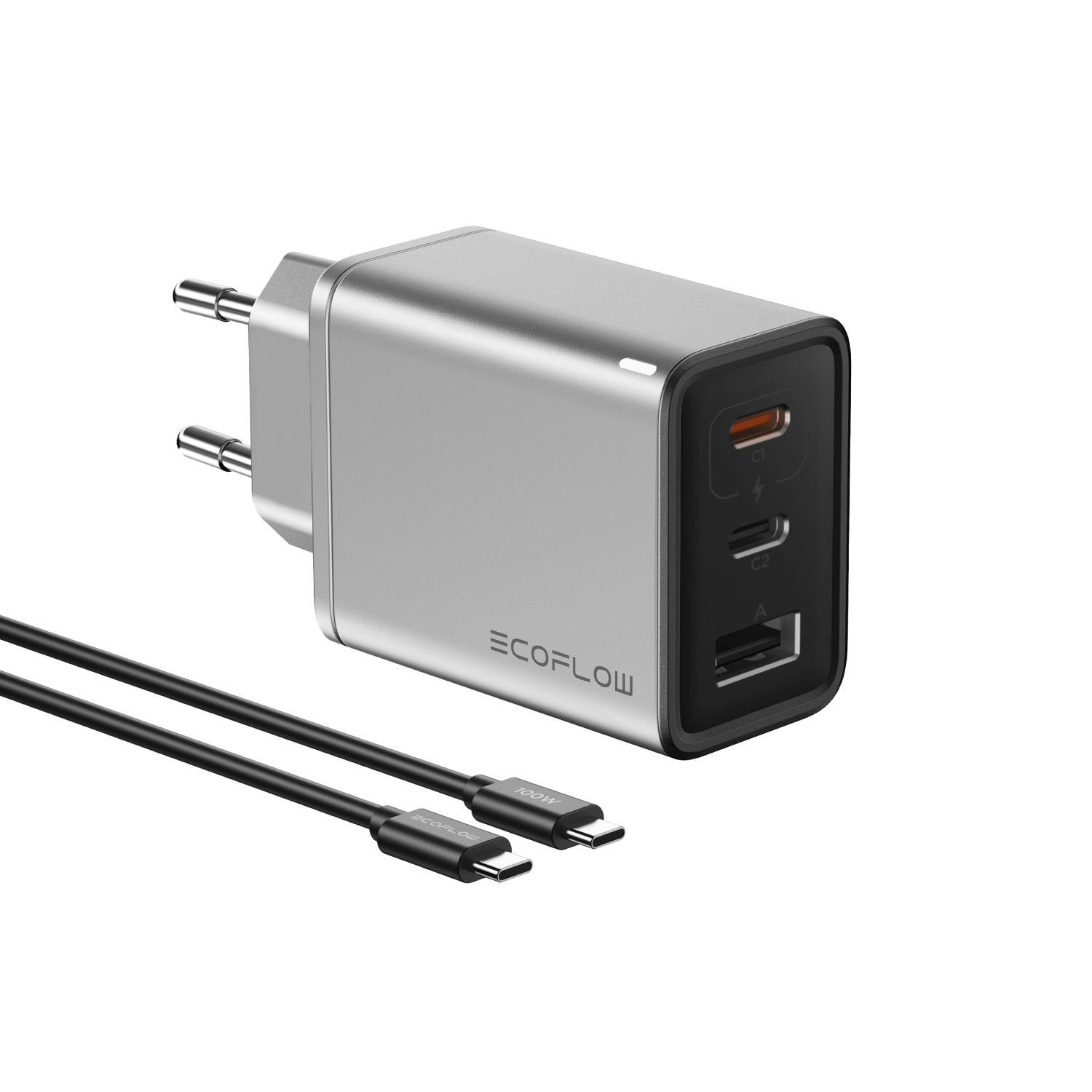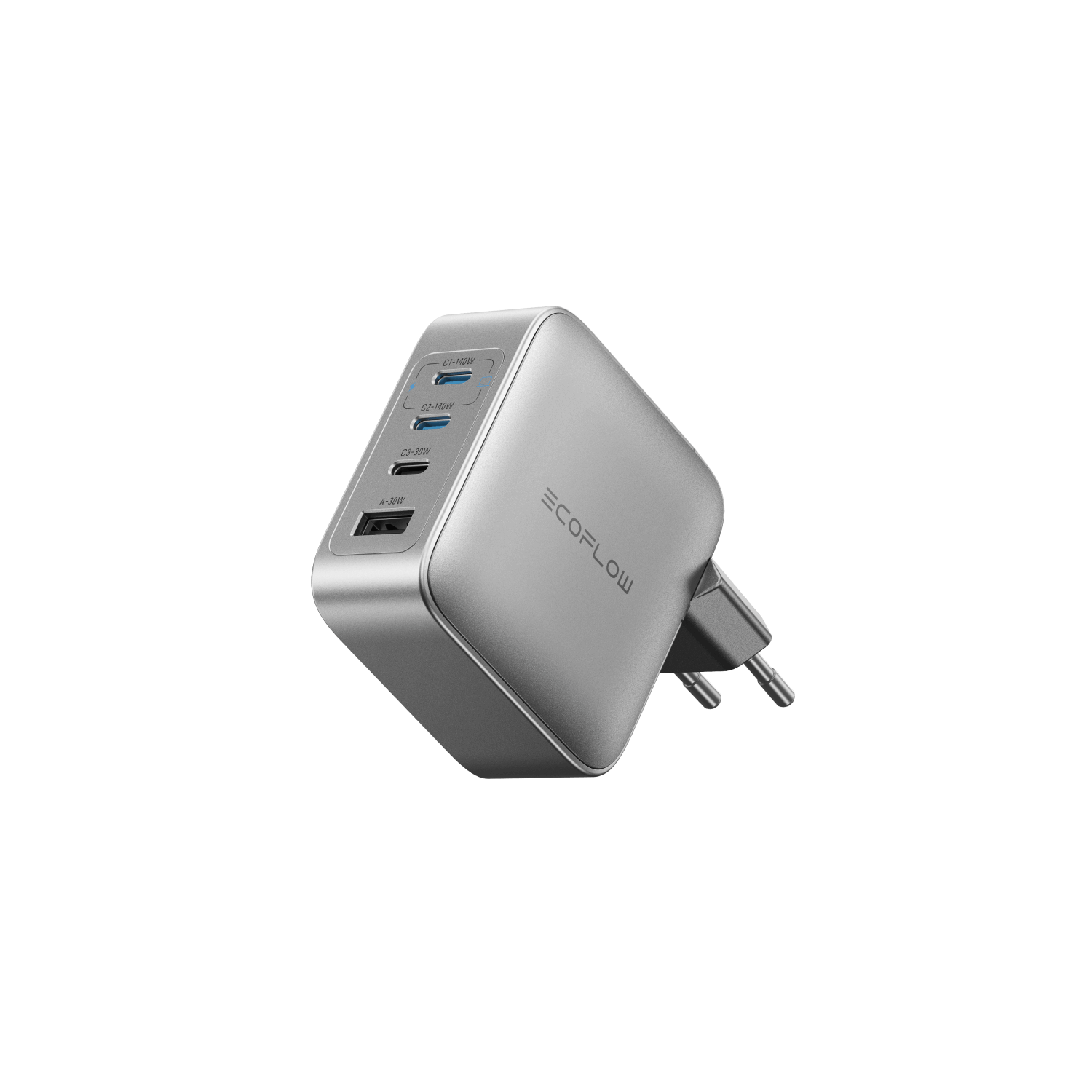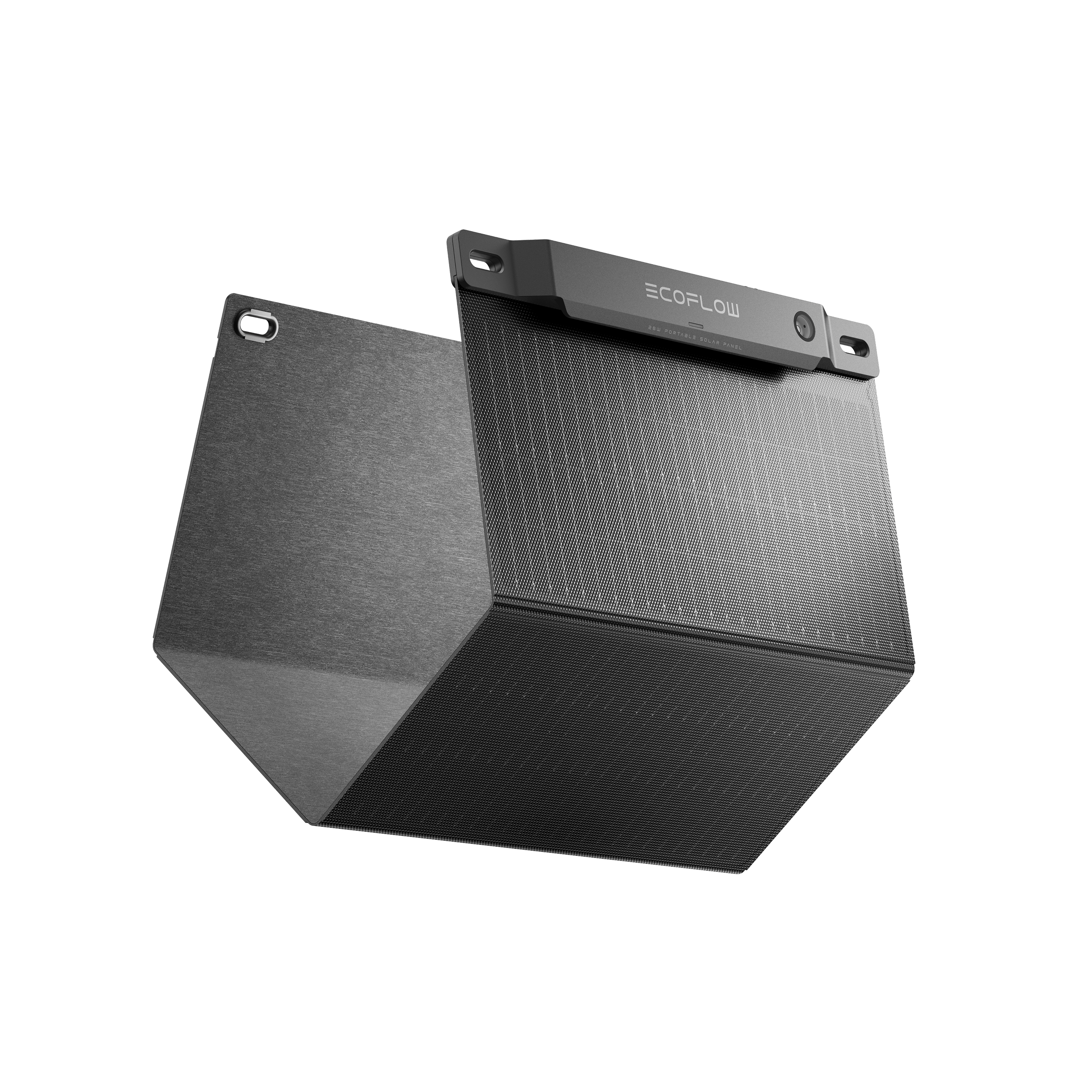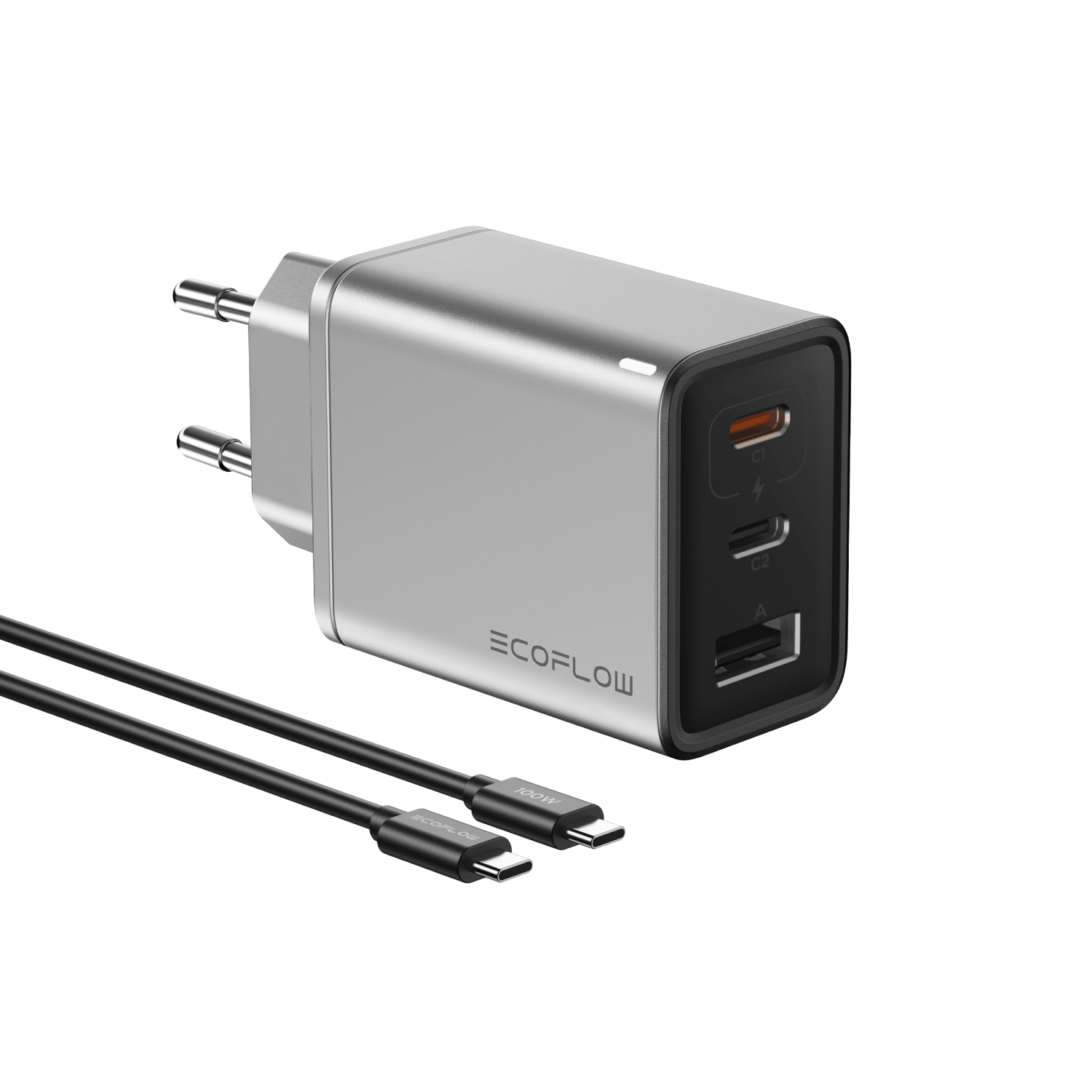

Power Bank – Mobile Energy on the Go
Looking for a reliable way to keep your devices charged on the move? A modern power bank is the perfect portable solution – compact, high-capacity, and convenient for daily use or travel across Europe. Whether it's your phone, tablet, or other USB-powered gadgets, stay connected wherever you go.
EcoFlow RAPID Pro Power Bank (27,650mAh, 300W, 140W Built-in Cable)
- Compact Size, Huge Power: 27,650mAh (99.54Wh) Air-travel-friendly.¹
- Fast Recharging Speed: 20 min to recharge to 80% using EcoFlow RAPID Pro 320W Charging Station.²
- 300W Multi-Device Charging
- High Wattage for Laptop Charging: 140W (Max) USB-C.
- Fast Multi-Device Charging: Total output (4 ports): 300W, 1 × 140W retractable USB-C cable, 1 × 140W USB-C port, 2 × 65W USB-C ports.
EcoFlow Power Bank FAQ
Power Banks – Common Questions AnsweredA power bank is a rechargeable, portable battery designed to store energy and supply it to electronic devices when mains electricity isn't available. Once charged via a wall socket or USB charger, it can power your smartphone, tablet, headphones, or camera through USB outputs.
Most quality power banks can withstand between 300 and 500 full charge and discharge cycles. With regular, careful use, this usually translates to a service life of several years before noticeable capacity loss occurs.
This depends on the battery size of your phone and the power bank’s capacity. For example, a 10,000 mAh unit can fully charge a phone with a 3,000 mAh battery around two to three times, accounting for some energy loss during transfer.
Yes, you may carry power banks in your cabin baggage on EU flights. According to international aviation guidelines, power banks up to 27,000 mAh (or 100 watt-hours) are allowed. Always verify the airline’s specific rules before departure, especially for larger capacity models.
The time required depends on both the charger output and the power bank's size. For instance, charging a 10,000 mAh power bank with a standard 2A charger may take approximately 5–6 hours.
When selecting a power bank, consider:
• Capacity: Higher mAh values support more recharges.
• Output options: Check for USB-A, USB-C, or Lightning compatibility.
• Fast charging: Features like Power Delivery (PD) or Quick Charge enhance speed.
• Portability: Lightweight and slim models are ideal for travel and commuting.
Answer text
Solar models can be useful in outdoor or emergency settings, but due to variable weather and limited sunlight, charging via solar panels is often slow. For best results, pre-charge them from the mains and use the solar function as a backup.
• Avoid deep discharges: Try not to let the battery run completely flat.
• Store in a dry, temperate environment: Excess heat or moisture can reduce longevity.
• Keep ports clean: Dust and debris may interfere with charging.
Yes – provided the power bank supports high wattage output (often via USB-C) and is compatible with your device’s voltage and power requirements. Always check specifications before use.

